
Memorial Day is a United States federal holiday that is observed on the last Monday of May (observed this year on 2007-05-28). It was formerly known as Decoration Day. This holiday commemorates U.S. men and women who have died in military service to their country. It began first to honor Union soldiers who died during the American Civil War. After World War I, it expanded to include those who died in any war or military action. One of the longest standing traditions is the running of the Indianapolis 500, which has been held in conjunction with Memorial Day since 1911.http://en.wikipedia.org/wiki/Memorial_Day
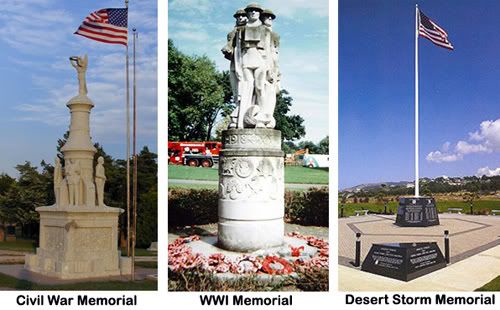
Memorial Day, originally called Decoration Day, is a day of remembrance for those who have died in our nation's service. http://www.usmemorialday.org/backgrnd.html
There are many stories as to its actual beginnings, with over two dozen cities and towns laying claim to being the birthplace of Memorial Day. There is also evidence that organized women's groups in the South were decorating graves before the end of the Civil War: a hymn published in 1867, "Kneel Where Our Loves are Sleeping" by Nella L. Sweet carried the dedication "To The Ladies of the South who are Decorating the Graves of the Confederate Dead" (Source: Duke University's Historic American Sheet Music, 1850-1920). While Waterloo N.Y. was officially declared the birthplace of Memorial Day by President Lyndon Johnson in May 1966, it's difficult to prove conclusively the origins of the day. It is more likely that it had many separate beginnings; each of those towns and every planned or spontaneous gathering of people to honor the war dead in the 1860's tapped into the general human need to honor our dead, each contributed honorably to the growing movement that culminated in Gen Logan giving his official proclamation in 1868. It is not important who was the very first, what is important is that Memorial Day was established. Memorial Day is not about division. It is about reconciliation; it is about coming together to honor those who gave their all.
Memorial Day was officially proclaimed on 5 May 1868 by General John Logan, national commander of the Grand Army of the Republic, in his General Order No. 11, and was first observed on 30 May 1868, when flowers were placed on the graves of Union and Confederate soldiers at Arlington National Cemetery. The first state to officially recognize the holiday was New York in 1873. By 1890 it was recognized by all of the northern states. The South refused to acknowledge the day, honoring their dead on separate days until after World War I (when the holiday changed from honoring just those who died fighting in the Civil War to honoring Americans who died fighting in any war). It is now celebrated in almost every State on the last Monday in May (passed by Congress with the National Holiday Act of 1971 (P.L. 90 - 363) to ensure a three day weekend for Federal holidays), though several southern states have an additional separate day for honoring the Confederate war dead: January 19 in Texas, April 26 in Alabama, Florida, Georgia, and Mississippi; May 10 in South Carolina; and June 3 (Jefferson Davis' birthday) in Louisiana and Tennessee.
In 1915, inspired by the poem "In Flanders Fields," Moina Michael replied with her own poem:
We cherish too, the Poppy red
That grows on fields where valor led,
It seems to signal to the skies
That blood of heroes never dies.
She then conceived of an idea to wear red poppies on Memorial day in honor of those who died serving the nation during war. She was the first to wear one, and sold poppies to her friends and co-workers with the money going to benefit servicemen in need. Later a Madam Guerin from France was visiting the United States and learned of this new custom started by Ms.Michael and when she returned to France, made artificial red poppies to raise money for war orphaned children and widowed women. This tradition spread to other countries. In 1921, the Franco-American Children's League sold poppies nationally to benefit war orphans of France and Belgium. The League disbanded a year later and Madam Guerin approached the VFW for help. Shortly before Memorial Day in 1922 the VFW became the first veterans' organization to nationally sell poppies. Two years later their "Buddy" Poppy program was selling artificial poppies made by disabled veterans. In 1948 the US Post Office honored Ms Michael for her role in founding the National Poppy movement by issuing a red 3 cent postage stamp with her likeness on it.
Traditional observance of Memorial day has diminished over the years. Many Americans nowadays have forgotten the meaning and traditions of Memorial Day. At many cemeteries, the graves of the fallen are increasingly ignored, neglected. Most people no longer remember the proper flag etiquette for the day. While there are towns and cities that still hold Memorial Day parades, many have not held a parade in decades. Some people think the day is for honoring any and all dead, and not just those fallen in service to our country.
There are a few notable exceptions. Since the late 50's on the Thursday before Memorial Day, the 1,200 soldiers of the 3d U.S. Infantry place small American flags at each of the more than 260,000 gravestones at Arlington National Cemetery. They then patrol 24 hours a day during the weekend to ensure that each flag remains standing. In 1951, the Boy Scouts and Cub Scouts of St. Louis began placing flags on the 150,000 graves at Jefferson Barracks National Cemetery as an annual Good Turn, a practice that continues to this day. More recently, beginning in 1998, on the Saturday before the observed day for Memorial Day, the Boys Scouts and Girl Scouts place a candle at each of approximately 15,300 grave sites of soldiers buried at Fredericksburg and Spotsylvania National Military Park on Marye's Heights (the Luminaria Program). And in 2004, Washington D.C. held its first Memorial Day parade in over 60 years.
To help re-educate and remind Americans of the true meaning of Memorial Day, the "National Moment of Remembrance" resolution was passed on Dec 2000 which asks that at 3 p.m. local time, for all Americans "To voluntarily and informally observe in their own way a Moment of remembrance and respect, pausing from whatever they are doing for a moment of silence or listening to 'Taps."
The Moment of Remembrance is a step in the right direction to returning the meaning back to the day. What is needed is a full return to the original day of observance. Set aside one day out of the year for the nation to get together to remember, reflect and honor those who have given their all in service to their country.
But what may be needed to return the solemn, and even sacred, spirit back to Memorial Day is for a return to its traditional day of observance. Many feel that when Congress made the day into a three-day weekend in with the National Holiday Act of 1971, it made it all the easier for people to be distracted from the spirit and meaning of the day. As the VFW stated in its 2002 Memorial Day address: "Changing the date merely to create three-day weekends has undermined the very meaning of the day. No doubt, this has contributed greatly to the general public's nonchalant observance of Memorial Day."
On January 19, 1999 Senator Inouye introduced bill S 189 to the Senate which proposes to restore the traditional day of observance of Memorial Day back to May 30th instead of "the last Monday in May". On April 19, 1999 Representative Gibbons introduced the bill to the House (H.R. 1474). The bills were referred the Committee on the Judiciary and the Committee on Government Reform.

Laying claim to Memorial Day
Has Carbondale met its Waterloo?
http://www.chicagotribune.com/features/lifestyle/chi-0528memorial_archivemay28,1,6210225.story?coll=chi-news-hed
CARBONDALE -- Every holiday needs a home -- try imaging St. Patrick's Day without Ireland or Christmas without Bethlehem.
And on this day it raises the question: Just where does Memorial Day call home?
The answer depends on whom you ask, although most folks here will point you toward Woodlawn Cemetery, where you'll find not one but three different plaques proclaiming "the founding of Memorial Day in this cemetery."
But not so fast. The debate over which town reigns as the hometown of Memorial Day stretches back nearly 140 years, when an Illinois veteran first declared the day a nationwide holiday. It's a tale that weaves its way from Civil War battlefields through the halls of Congress.
We'll start this version in the Oval Office ...
As the country increased its troop deployment to Vietnam, President Lyndon Johnson offered the nation a somber Memorial Day message in May 1966, and there was only a lone, bright note in the speech: The small Upstate New York village of Waterloo, N.Y., was readying to mark its 100th consecutive Memorial Day.
"The 89th Congress has officially recognized that the patriotic tradition of observing Memorial Day began 100 years ago in Waterloo," the president said. The news from Washington of course delighted the citizens of Waterloo, but it apparently didn't reach Carbondale, where the local newspaper reported May 29 that the area's congressman was busy "working for the passage of a bill to declare Carbondale the official site of the first Memorial Day."
The next day, the date of the actual holiday, thousands poured into Carbondale's Woodlawn Cemetery to hear a retired Army general tell the crowd that Carbondale's claim was sound and correct. Everyone cheered the statement, unaware that 800 miles away, the world -- or at least the federal government -- had already voided that dream.
The events in Carbondale all started in April 1866, when the town observed a memorial service at Woodlawn Cemetery to honor those killed in the recently ended Civil War. Similar ceremonies also occurred independently at several spots from Georgia to Pennsylvania, including a month later in Waterloo.
Within two years, the "Decoration Days," as they were called, occurred across the country; and on May 5, 1868, Gen. John A. Logan, commander in chief of the nation's largest veterans group, declared every May 30 a day for "strewing with flowers or otherwise decorating the graves of comrades who died in defense of their country during the late rebellion."
Waterloo argues that Gen. Logan drew his inspiration from their version of the event.
"What sets Waterloo apart from the other places is the nature of the observance in 1866," said Tanya Warren, curator of the National Memorial Day Museum, located, not without controversy, in Waterloo.
"The shops were closed -- everything closed -- and it continued to be that way," she said. "We're not saying 'ha ha' we got it,' but it also sets us apart that we have bona fide moments at a graveyard."
Carbondale's bona fide is the general himself, who not only grew up in adjacent Murphysboro but was the keynote speaker at the April 1866 Woodlawn event.
"We're very proud of it and rightly so," said Brad Cole, Carbondale's current mayor who supports the city's claim.
"It was here," he said succinctly.
Logan, who represented Illinois in both the House and Senate, cut a major figure in the 19th Century, and he remains popular to this day in southern Illinois.
His name graces an area elementary school, a junior college, numerous country roads and a highway that officials dedicated in 2005. Just last week, the General John A. Logan museum in Murphysboro nearly doubled its exhibition space. (Logan is also recognized by Chicago with Logan Square and Logan Boulevard, as well as a statue of him astride a bronze horse in Grant Park.)
P. Michael Jones, director of Murphysboro's Logan museum, said he wants to believe Carbondale's claim but understands there are several strikes against the city -- even beyond the residents' failure to register their claim before Waterloo did.
Consider that no one in Carbondale is known to have written down anything relating to the first Woodlawn event until a couple of years later. And there's also the issue of Boalsburg, Pa., which claims to be the home of Memorial Day, as it observed a similar event in October 1864 -- two years before the other mentioned towns did.
Even Logan's wife, Mary, further muddied the history in the latter part of her life, stating that she gave her husband the idea after she witnessed war widows tend to graves in Petersburg, Va., in 1866.
Ever the diplomat, Gen. Logan is not known to have explained his holiday's genesis, although of all the cities mentioned as possible hometowns of Memorial Day -- a list as long as two dozen -- Carbondale remains the only place the general visited for such a "first event."
Jones thinks the issue will never be resolved, and he hopes that people instead focus on the day's intent to honor those Americans killed in military service.
"That's what it's all about," he said. "That's the way Logan would have wanted it."
- - -
The history of a holiday
As part of its Memorial Day programming this year, The History Channel will trace the holiday's timeline.
The only problem -- no one agrees when and where the first Memorial Day occurred.
"This makes Memorial Day unique," said Libby Haight O'Connell, the channel's chief historian.
"It's interesting that there's such a competitive spirit over this."
Haight O'Connell and her team decided to avoid the fray by noting that several locations believe they're the birthplace.
Cities that claim their observations predate Gen. John A. Logan's 1868 Memorial Day declaration include Columbus, Miss.; Macon, Ga.; Waterloo, N.Y.; Richmond, Va.; Boalsburg, Pa.; and Carbondale.
1868: Logan, an Illinois native, declares that May 30 shall be a day for decorating the graves of those who died "in defense of their country" during the recent Civil War. The first official service occurs at Arlington National Cemetery.
1873: New York becomes the first state to recognize Memorial Day as a legal holiday.
1888: Congress makes May 30 a holiday for federal employees. Some people, especially in the South, continue to refer to the holiday as "Decoration Day" instead of "Memorial Day."
1966: Congress and President Lyndon Johnson declare Waterloo, N.Y., the site of the first Memorial Day.
1971: Memorial Day becomes a national holiday and changes from May 30 to the "last Monday in May."
2007: Nine Southern states continue to honor Confederate dead with separate "Decoration Days." Source: The U.S. Army and The History Channel
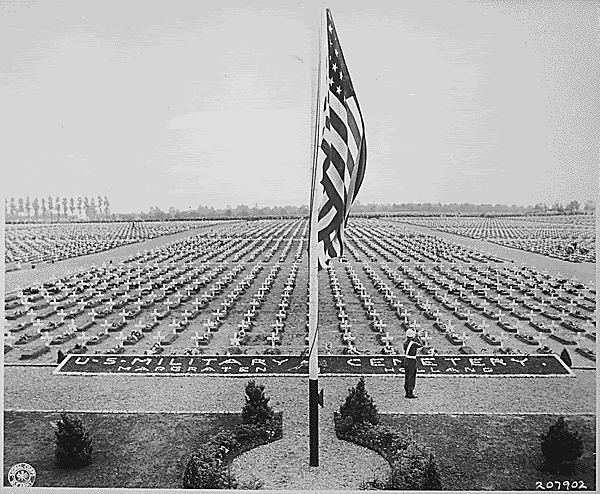
U.S. Troops At War Being Honored For Memorial Day
http://wjz.com/local/local_story_148063048.html
Americans have opened nearly 1,000 new graves to bury U.S. troops killed in Iraq since Memorial Day a year ago. The figure is telling — and expected to rise in coming months.
As Mary Bubala reports, in the period from Memorial Day 2006 through Saturday, 980 soldiers and Marines died in Iraq, compared to 807 deaths in the previous year.
With the Baghdad security operation now 3 1/2 months old, even President Bush has predicted a difficult summer for U.S. forces which, could continue to face high rates of casualties.
"It could be a bloody — it could be a very difficult August," he said last week.
U.S. commander Gen. David Petraeus on Saturday acknowledged the increase in casualties as a result of the American surge in forces to regain control of Baghdad.
"We're doing heavy fighting. This is a fight. There's a war on out there," he told reporters at al-Asad Airbase in western Iraq.
Michael O'Hanlon, a military analyst with the Brookings Institution and a consultant to the bipartisan Iraq Study Group, said the increased casualties were a result of the security operation.
Thousands more American soldiers are patrolling the streets and living in isolated outposts across Baghdad, leaving them more vulnerable to attack. He also said the increase in raids on extremist Shiite militiamen had brought a wave of retaliatory attacks.
"We're out there on the streets a lot more. There are more patrols going on every day, so we're more open to attacks," O'Hanlon said.
Stephen Biddle, a military expert at the Council on Foreign Relations and a member of a group that spent weeks in Iraq assessing the situation for Petraeus and U.S. Ambassador Ryan Crocker, agreed that more American deaths were likely.
"The biggest change in their (insurgent and militia) tactics is that they've changed to exploit the vulnerabilities we've opened ourselves up to. They see a new, small American base in their neighborhood, three blocks away, and they're going to car bomb it," said Biddle.
"We're going to see a spike in the short term," said Biddle. "But the likelihood is that in six months we'll see a drop in casualties as these areas become more secure. The problem is, what about the rest of the country?"
By the end of Saturday at least 100 American troops had died in the first 26 days of May, an average of 3.85 deaths a day. At that pace, 119 troops will have died by the end of the month, the most since 137 soldiers were killed in November 2004, when U.S. troops were fighting insurgents in Fallujah.
As of Saturday, May 26, 2007, at least 3,451 members of the U.S. military have died since the beginning of the Iraq war in March 2003, according to an Associated Press count. The figure includes seven military civilians. At least 2,817 died as a result of hostile action, according to the military.
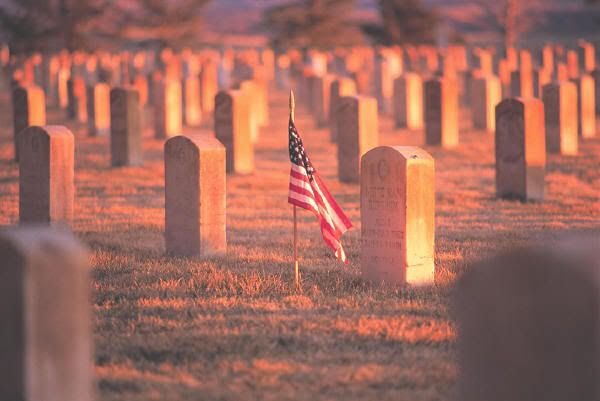
U.S. deaths near grim Memorial Day mark
http://www.chron.com/disp/story.mpl/ap/world/4839465.html
BAGHDAD — Americans have opened nearly 1,000 new graves to bury U.S. troops killed in Iraq since Memorial Day a year ago. The figure is telling — and expected to rise in coming months.
In the period from Memorial Day 2006 through Saturday, 980 soldiers and Marines died in Iraq, compared to 807 deaths in the previous year. And with the Baghdad security operation now 3 1/2 months old, even President Bush has predicted a difficult summer for U.S. forces.
"It could be a bloody — it could be a very difficult August," he said last week.
U.S. commander Gen. David Petraeus on Saturday acknowledged the increase in casualties as a result of the American surge in forces to regain control of Baghdad.
"We're doing heavy fighting. This is a fight. There's a war on out there," he told reporters at al-Asad Airbase in western Iraq.
Michael O'Hanlon, a military analyst with the Brookings Institution and a consultant to the bipartisan Iraq Study Group, said the increased casualties were a result of the security operation.
Thousands more American soldiers are patrolling the streets and living in isolated outposts across Baghdad, leaving them more vulnerable to attack. He also said the increase in raids on extremist Shiite militiamen had brought a wave of retaliatory attacks.
"We're out there on the streets a lot more. There are more patrols going on every day, so we're more open to attacks," O'Hanlon said.
Stephen Biddle, a military expert at the Council on Foreign Relations and a member of a group that spent weeks in Iraq assessing the situation for Petraeus and U.S. Ambassador Ryan Crocker, agreed that more American deaths were likely.
"The biggest change in their (insurgent and militia) tactics is that they've changed to exploit the vulnerabilities we've opened ourselves up to. They see a new, small American base in their neighborhood, three blocks away, and they're going to car bomb it," said Biddle.
"We're going to see a spike in the short term," said Biddle. "But the likelihood is that in six months we'll see a drop in casualties as these areas become more secure. The problem is, what about the rest of the country?"
By the end of Saturday at least 100 American troops had died in the first 26 days of May, an average of 3.85 deaths a day. At that pace, 119 troops will have died by the end of the month, the most since 137 soldiers were killed in November 2004, when U.S. troops were fighting insurgents in Fallujah.
As of Saturday, May 26, 2007, at least 3,451 members of the U.S. military have died since the beginning of the Iraq war in March 2003, according to an Associated Press count. The figure includes seven military civilians. At least 2,817 died as a result of hostile action, according to the military.

Statistical Summary
America's Major Wars
http://www.cwc.lsu.edu/other/stats/warcost.htm
Numbers of Americans Killed/Wounded, by Action
http://members.aol.com/usregistry/allwars.htm
Cost of Wars
Figures are from the Congressional Research Service, courtesy of The Washington Post, 10 Sept 2003":
American Revolution: $3.2 billion.
War of 1812: $1 billion.
Mexican War: $1.8 billion.
Civil War: $50 billion Union, $21.8 billion Confederacy.
Spanish-American War: $6.5 billion.
World War I: $588 billion.
World War II: $4.8 trillion.
Korean War: $408 billion.
Vietnam War: $584 billion.
Persian Gulf War of 1991: $82 billion. Contributions from U.S. allies ended up covering more than 90 percent of this war's costs.
Operation Iraqi Freedom: $197 billion, as of March 2006.
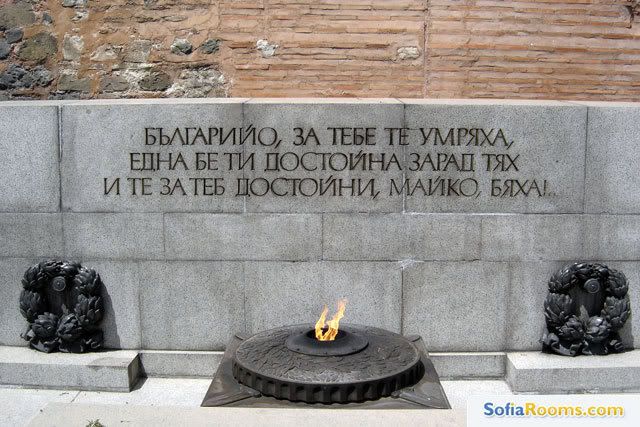

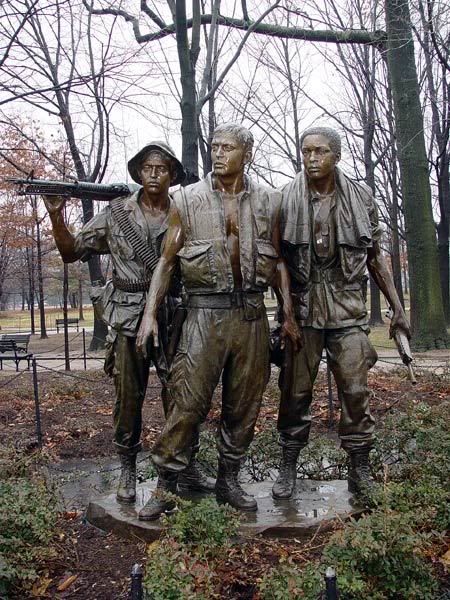


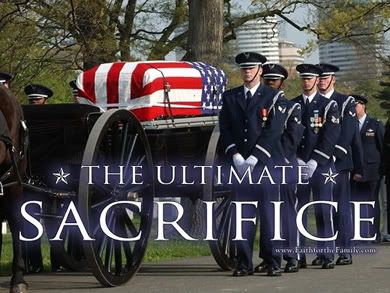












![Brotherhood" (2006) [TV-Series]](http://photos1.blogger.com/x/blogger2/1421/379621144723082/211/z/425926/gse_multipart33129.jpg)







No comments:
Post a Comment